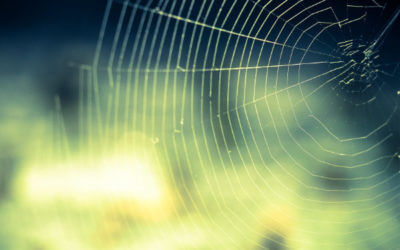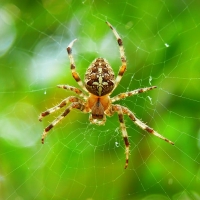
Types of Spiders Commonly Found Inside of a House
Chances are good that you, or someone you know, is afraid of spiders. This fear is pretty common– which can be unfortunate, since spiders can frequently be found inside many homes. While it’s true that spiders are beneficial creatures, and their presence can help to control other kinds of pests, it’s hard to keep that in mind when one of them surprises you in your home.
Understanding the types of spiders that frequently invade houses can help homeowners identify and deal with arachnid houseguests– and having some knowledge about their habits in your back pocket can help you manage their presence without fear.
Cellar spiders
Cellar spiders, also sometimes referred to as daddy longlegs, are known for their long, delicate legs and small bodies. They can often be found in dark, damp areas of homes, like basements and crawl spaces.
They’re harmless to humans, and they feed on other pests like flies and mosquitoes. While their presence might be unnerving, they’re beneficial to your home and contribute to natural pest control.
House spiders
True to their name, house spiders are one of the most common spider species found indoors. Although this name can refer to a few different species, house spiders are typically small and brown.
They build messy, irregular webs in corners and quieter areas of the house, like closets. They might be scary at first glance, but they’re harmless and help to keep other insect populations in check.
Brown recluse spiders
These spiders have a distinctive violin-shaped marking on their bodies. They are reclusive and prefer to avoid human contact, instead hiding in dark, quiet areas like closets, basements, and attics.
Unlike some other household spiders, brown recluse spiders are known for their venomous bite– which can cause major skin damage in some cases. If you spot one of these spiders, be extra-careful. If you suspect an infestation, it’s time to call in professional help.

Black widow spiders
Like brown recluse spiders, black widow spiders are known for their venomous bites. In fact, their bites can potentially be fatal, especially for young children or older adults. While these bites can be fatal, they are also fairly rare– and fatalities are even rarer.
Females are easily recognizable by their shiny black bodies and the red hourglass-shaped marking on their abdomens. They like to build webs in areas like wood piles, garages, and outdoor sheds.
Exercise caution around black widow spiders, and be sure to seek medical attention if you’re bitten by one.
Jumping spiders
Jumping spiders are small and agile, with excellent eyesight and the ability to jump surprisingly far to catch their prey. You can often identify them by their unique body shape and bright colors.
These spiders don’t build webs, but are active hunters– which means you might see them exploring your home, especially in well-lit areas.
If you spot one of these spiders inside your home, don’t worry! They don’t like to live indoors, and have most likely wandered inside by mistake. They’re harmless to humans, and while they can bite, their bites are not venomous. They don’t pose any danger to humans. We’d recommend looking up some close-up pictures of jumping spiders– they’re pretty cute!
Are spiders in my house dangerous?
Being able to tell the difference between various species of spiders can be helpful for homeowners learning to coexist with their eight-legged houseguests. Most spiders that are commonly found inside homes are harmless, and even serve as natural pest control. But it’s important to be able to recognize the more harmful types of spiders– and if you do, call in a professional to keep you and your family safe.
More posts from West Termite, Pest & Lawn
Spring Into Action: Preventing Termite Infestations in Arkansas Homes
Termite infestations are a serious concern for homeowners in Arkansas, especially during the spring when these pests become most active. Preventing termite infestations early can save you from expensive structural damage and long-term headaches. Termites thrive in the...
Early Spring Lawn Care Tips: How to Keep Your Arkansas Yard Healthy
A healthy lawn starts in early spring. If you want lush, green grass by summer, the groundwork begins as the weather warms and the soil softens. The right early spring lawn care routine is essential for homes in Arkansas, where fluctuating temperatures and humidity...
Mosquito Season is Coming: How to Protect Your Arkansas Home This Spring
Spring is here, and with it comes mosquito season. As temperatures rise and moisture increases, mosquitoes begin to thrive across Arkansas. If you are not prepared, these presets can quickly invade your yard and turn outdoor activities into a battle against bites. The...



